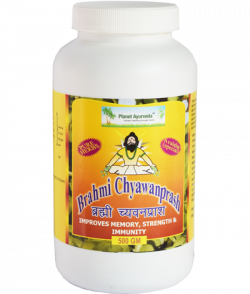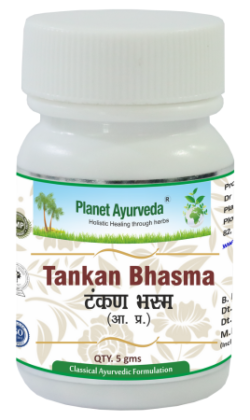Description
Ayurveda is a very mysterious science which has many things at the core of its heart. It has various methods for preparation of formulations. Due to various preparatory methods, generally the action of the herb enhances or changes. One of such methods of Aushadh prakaran is kshar preparation. Kshar is basically an alkaline Ayurvedic preparation which can be in powder, liquid, and paste form. Generally it is an extract of the ashes of different Ayurvedic herbs, which have been used for thousands of years, from the time of Acharya Sushruta. The alkaline Ayurvedic formulations are highly effective and their use for health benefits is increasing nowadays. Here in this article, we are going to discuss muli kshar, its indications, ingredients, method of preparation and medicinal properties.
Introduction
Muli kshar is an alkaline Ayurvedic Preparation. The formulation is generally prepared using muli alone. muli , which is known as radish in English, is the key and only ingredient of this formulation. For the preparation the whole plant is used which is called panchang (five parts of plant). The whole plant is firstly dried and then burnt to ashes in the open air. The muli kshar is very beneficial in various metabolic conditions along with simple fever to chronic ones. The flowers, fruit and seed are often used separately for their medicinal values. There are many home remedies which are being explained and have multi juice as their key ingredient. Muli kshar is explained in many Ayurvedic texts and here the muli kshar is explained according to Ayurved sar sangrah along with its method of preparation.
Classical Indication
- Pandu
- Kamla
- Shooth
- Ashmari
- Mutraghat
- Mutra krich
- Mutr Sharkara
- Mutra daha
Ingredient
Muli (Radish)
Reference:- Ayurved Saar Sangrah
Ingredient Description
- Muli, commonly called as radish and in sanskrit known by the name mulakam, has many amazing properties which are less known by people. It belongs to the Rajika kula and Cruciferae family. The latin name suggests that radish is something which can be quickly cultivated.
- In Sanskrit it has many synonyms like Mulak, mulahva, kandamula, hastidant, haritparna, ruchir, teekshna, mishra and vyakti rasa. Generally the fresh radish contains 91% water. The radish has two types and the smaller variety is easy to digest. But the larger part is heavy to digest. Muli has katu (pungent) taste, katu vipaka (post digestion effect) and ushna veerya (hot potency). The small variety of radish alleviates tridosha and the larger variety vitiates tridosha.
- If discussed about the internal uses of muli then its seeds are having curative effect which means it can cure diseases. They are useful in renal stones and amenorrhoea. It can also be used in hepatosplenic enlargement. The flower is kaphapittaghna and fruit is kapha vata ghana. It also has antiflatulent properties.
Method Of Preparation
The method of preparation for muli kshar is as following:
- Firstly the muli panchang or the whole radish plant is dried.
- Then it is burned and the ashes are collected.
- Ashes are then weighted and then are mixed in water. The quantity of water is 8 times the weight of ash.
- It is kept for proper sedimentation for around 6-7 hours and then strained.
- The straining is done for a total of 7 times.
- Then using kshar pak vidhi the final kshar formulation is made.
- For kshar pak, the strained water is heated on a low flame until its appearance becomes similar to mud.
- Then it is dried by keeping it in sunlight. The dried one is the kshar we need.
- It is white in colour and is in powder form.
- The muli kshar is then collected and stored in an airtight jar.
Medicinal Properties
The medicinal properties of muli kshar are numerous. But particular ones are mentioned below:
- It helps in enhancing the hemoglobin levels and prevents anemia.
- Muli kshar is known to disrupt the process of hemolysis in jaundice and hence brings the increased bilirubin levels to normal.
- As it is known to pacify all three doshas, so can be given in various conditions like renal calculi and disorders related to the urinary system.
- It can also have effective work in disorders related to the respiratory system.
Indications
- Anemia
- Jaundice
- Swelling
- Calculi
- Burning urination
- Difficulty in urination
- Gravels in urine
- Common cold
- Respiratory conditions like bronchitis
Dosage
Muli kshar can be given in the dose varying from 125mg-1gm in two or three divided doses. 1 gm is the maximum value to be administered. The kshar formulation is to be administered with cold water, coconut water, varunadi kwath or gokshura kwath.
Contraindications
- It is advisable to take this medicine only under medical supervision, especially for children, pregnant and lactating mothers.
- Take this medicine only in prescribed dosage for a particular time period only.
- Store in a cool dry place.
- Keep out of reach and sight of children.
Conclusion
Muli kshar is like a hidden secret of Ayurveda whose importance is less known to the present population. Nowadays, Ayurveda and Ayurvedic herbs like slowly seeking attention and becoming a center point of attraction. This is a very great thing and people must understand the importance of using natural healing methods. The Ayurvedic herbs or minerals do not cause any kind of harm to the body, instead they help in enhancing the process of healing. Like modern drugs they just do not suppress the symptoms but help in enhancing the body’s immunity to fight, detoxifies it and gives it a chance to heal itself.
Note :- This is pure classical Ayurvedic medicine and should be strictly consumed only after prescription of an Ayurvedic doctor and to be taken under medical supervision only.







Reviews
There are no reviews yet.